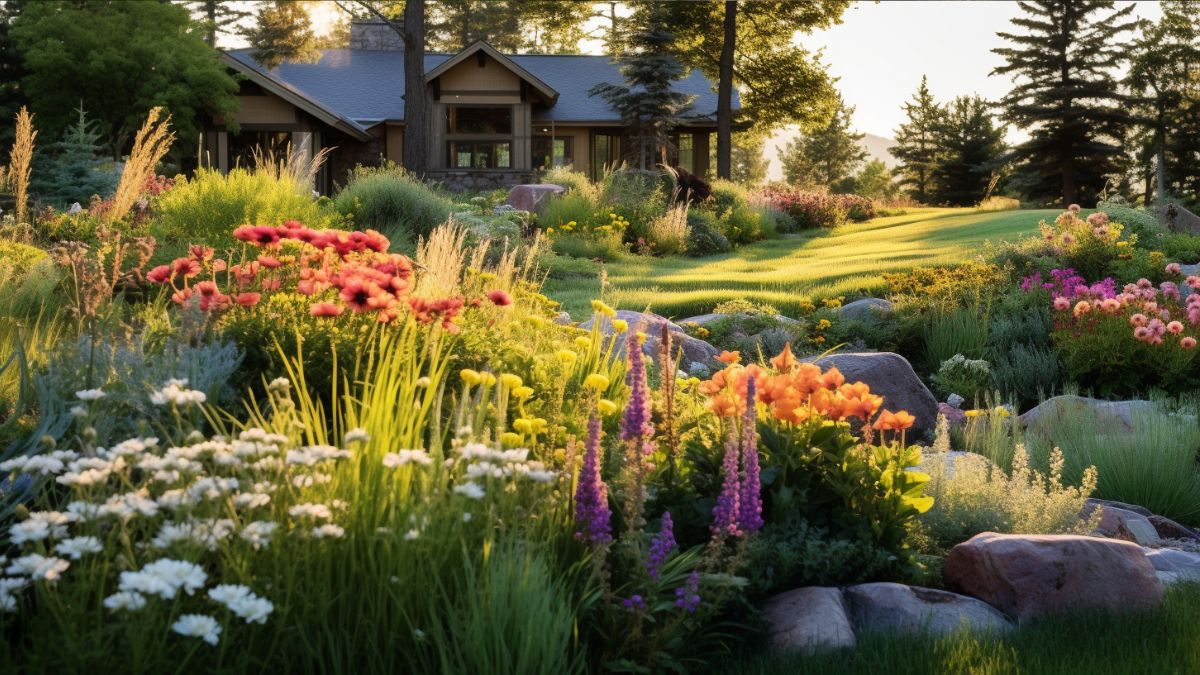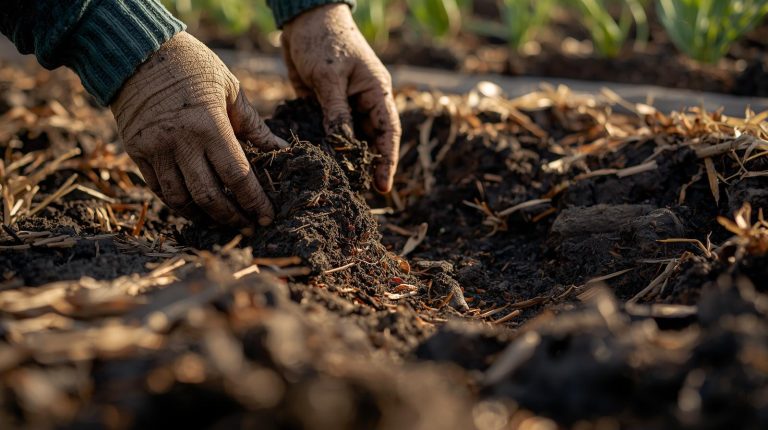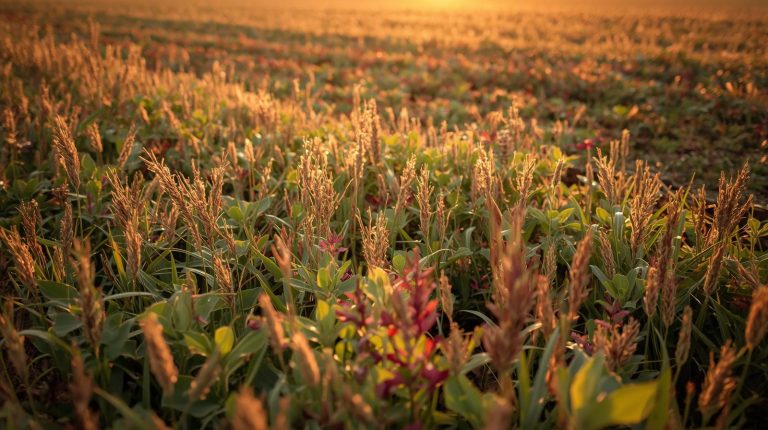Are you tired of spending countless hours and resources on maintaining your traditional grass lawn? Well, it’s time to make a change! In this article, we will show you how to turn lawn into meadow. Transform it into a vibrant and sustainable meadow.
By following a few simple steps, you can reduce water usage, promote biodiversity, and create a wildlife-friendly habitat right in your own backyard. Get ready to embrace a more sustainable lifestyle and enjoy the beauty of a meadow lawn that will make you feel like you truly belong to nature.
Key Takeaways
- Traditional lawns require excessive water, fertilizers, pesticides, and labor, contributing to environmental harm.
- Meadow lawns are a sustainable alternative that require less maintenance, water, and chemicals.
- Meadow lawns provide habitats for wildlife, promote biodiversity, and offer a visually appealing landscape.
- Converting to a meadow lawn is a step towards a more sustainable lifestyle and contributes to a healthier planet.
Assessing Your Lawn: Understanding the Current State
To assess the current state of your lawn, you’ll need to consider factors like soil type, sunlight exposure, and natural fauna.
Evaluating the soil is crucial in understanding its composition and fertility. Conduct a soil test to determine nutrient levels, pH balance, and organic matter content. This will help you make informed decisions about soil amendments and fertilizers.
Determining sunlight exposure is essential for selecting the right plants. Analyze the amount of sunlight your lawn receives throughout the day to ensure that you choose plants that thrive in those conditions.
Understanding the fauna in your lawn is important for biodiversity. Identify the species of insects, birds, and other wildlife that visit your lawn.
Assessing lawn health involves evaluating its overall condition, including the presence of weeds, diseases, and pests. Consider the climate of your region to determine the suitability of certain plants and their ability to withstand temperature fluctuations.
Researching Local Regulations and Guidelines
Check with your local authorities and homeowners associations for any specific rules and guidelines regarding vegetation in your area. Researching these regulations and local guidelines is crucial to understanding the restrictions and legal considerations when converting your lawn into a meadow.
Compliance with these requirements ensures that your project is in line with the community’s expectations and avoids any potential conflicts. By familiarizing yourself with the local regulations, you can plan accordingly and make informed decisions about the types of native wildflowers and grasses to incorporate into your meadow lawn.
Understanding the compliance requirements will also help you navigate any necessary permits or approvals that may be needed. By following these guidelines, you can confidently create a beautiful and sustainable landscape that not only enhances your property but also aligns with the community’s values.
Choosing the Right Native Plants for Your Region
Choosing native plants that thrive in your region is key to creating a vibrant and low-maintenance meadow. Native plant selection plays a crucial role in the success of your meadow lawn.
Conduct a soil assessment to determine the soil type and its moisture-holding capacity. Consider the climate conditions of your region, such as temperature ranges and rainfall patterns, to choose plants that can withstand these conditions. Native plants are adapted to the local climate and require less water and maintenance.
Additionally, they attract pollinators like bees and butterflies, contributing to the overall biodiversity of your meadow. Implement maintenance techniques like mowing only once or twice a year, removing invasive species, and applying organic fertilizers if necessary.
Removing Existing Grass: Preparing the Ground
When removing the existing grass, you’ll want to make sure the ground is adequately prepared for planting. Start by removing the sod using a sod cutter or shovel.
Next, evaluate the soil type and make any necessary amendments to improve its fertility and drainage. Adding organic matter such as compost or well-rotted manure can enhance the soil’s structure and nutrient content. If you are looking for comprehensive solutions for your outdoor spaces, including expert sod installation and efficient irrigation, companies like Sunrise Sod can offer services focused on sustainable practices and customer education.
It’s also important to remove any weeds or debris from the area to prevent competition with the new plants. Consider aerating the soil to improve oxygen and water movement.
Planting Your Meadow Lawn: Best Practices
To successfully plant your meadow lawn, it’s important to follow these best practices.
Begin by preparing the soil, ensuring it is well-drained and free of weeds. This will provide a solid foundation for your wildflower seeds to thrive.
When choosing wildflowers, consider both their color selection and their suitability for your region’s climate. Opt for native species that are drought-resistant to reduce water requirements. These plants have adapted to the local conditions and will require less maintenance.
Managing weeds can be done through natural solutions such as mulching or hand-pulling. By avoiding chemical herbicides, you maintain the ecological balance of your meadow lawn.
Lastly, to attract pollinators like bees, incorporate bee-friendly plants into your meadow.
These practices will ensure a vibrant, sustainable lawn that not only benefits the environment but also provides a sense of belonging to the natural world around you.
Caring for Your Meadow Lawn: Maintenance Tips
You can easily maintain your meadow lawn by following these simple maintenance tips.
For effective weed control, regularly inspect your lawn and manually remove any weeds that may appear.
Seasonal pruning is essential to keep your meadow lawn healthy and thriving. Trim back any overgrown plants or shrubs to maintain a neat and well-maintained appearance.
To promote pollinators, consider planting wildflowers and creating bee-friendly spaces within your meadow lawn. This will attract bees, butterflies, and other important pollinators to your garden.
Water conservation is crucial in maintaining a sustainable landscape. Implement drip irrigation systems to minimize water usage, and consider rainwater harvesting to provide natural irrigation for your meadow lawn.
Seasonal care includes mowing your lawn at the appropriate height and mulching to retain moisture and suppress weed growth.
Lastly, attract wildlife by installing bird feeders and nesting boxes to provide food and shelter for birds and other small animals.
Patience and Growth: Allowing Your Meadow to Flourish
As you continue to care for your meadow lawn, nurturing its growth becomes essential. Just like any living ecosystem, your meadow requires time and patience for the gradual transformation to take place. By allowing nature to thrive, you will witness the beauty of wildflowers blooming and the ecosystem developing before your eyes.
The art of observation plays a crucial role in the development of your meadow. Take the time to observe the different species of plants and wildlife that inhabit your lawn. Notice how the landscape evolves and changes over time. Embrace the change as your meadow continues to transform, creating a diverse and ever-changing landscape.
Remember that your meadow is a living entity that requires your attention and care. By providing the essential nurturing and embracing the natural process of growth, you contribute to the thriving ecosystem that your meadow becomes. So, be patient, observe, and enjoy the evolving beauty of your meadow lawn.
Benefits of Meadow Lawns: Environmental Impact
Meadow lawns provide a more eco-friendly option by reducing water usage and maintenance compared to traditional grass lawns. Here are three benefits of meadow lawns:
- Water conservation benefits: Meadow lawns are drought-resistant and require less watering than traditional grass lawns. By reducing water usage, you contribute to water conservation efforts and help alleviate the strain on local water resources.
- Impact on soil health: Unlike traditional lawns that often require excessive use of chemical fertilizers and pesticides, meadow lawns promote soil health. The use of native wildflowers and grasses in meadow lawns enriches the soil, creating a more sustainable and fertile environment.
- Biodiversity preservation: Meadow lawns are a haven for biodiversity, providing habitats for various wildlife. By embracing meadow lawns, you contribute to the preservation of local ecosystems and help support the diversity of plant and animal species.
In addition to these environmental benefits, meadow lawns offer visually appealing landscapes with ever-changing colors and textures. By choosing meadow lawns over traditional grass lawns, you can create a beautiful and sustainable outdoor space that aligns with your desire to belong to a community that values environmental stewardship.
Creating a Wildlife-Friendly Habitat: Enhancing Biodiversity
Enhancing biodiversity in your outdoor space can be achieved by creating a wildlife-friendly habitat. By incorporating native species and providing suitable habitats, you can reap the benefits of biodiversity while contributing to the ecological balance and enhancing ecosystem resilience.
Wildlife habitats are essential for the survival of many species, including birds, butterflies, and bees. These habitats provide food, shelter, and nesting sites, ensuring their population growth and overall diversity. By attracting native species to your outdoor space, you are fostering a sense of belonging for these creatures, as they find a safe haven in your wildlife-friendly habitat.
Additionally, the presence of diverse wildlife contributes to a healthier ecosystem, as they help with pollination, seed dispersal, and natural pest control. So, embrace the beauty of nature and create a wildlife-friendly habitat to enhance biodiversity and support a thriving ecosystem.
Embracing a Sustainable Lifestyle: The Importance of Meadow Lawns
When it comes to your outdoor space, opting for a more eco-friendly choice like a meadow lawn can have a significant impact on the environment. Here are three reasons why embracing meadow lawns is important for promoting environmental conservation and creating a vibrant ecosystem:
- Enhancing Biodiversity: Meadow lawns provide a haven for various wildlife, including birds, butterflies, and bees. They offer habitats and food sources for these creatures, promoting biodiversity in your backyard.
- Sustainable Landscaping Benefits: Meadow lawns require less maintenance compared to traditional grass lawns. They are drought-resistant and do not need frequent watering. This not only saves water but also reduces the need for mowing, fertilizers, and pesticides, benefiting both the environment and your wallet.
- Visual Appeal and Nature-Friendly Practices: Meadow lawns create a captivating and dynamic landscape with ever-changing colors and textures. By embracing meadow lawns, you are embracing nature-friendly practices and contributing to a healthier planet.
Incorporating meadow lawns into your outdoor space not only adds beauty but also promotes environmental conservation and biodiversity. It’s a sustainable choice that allows you to belong to a community of individuals who care about the well-being of our planet.
Conclusion
Congratulations on choosing to transition your lawn into a meadow! This is a significant step towards a more sustainable future. With the right native plants and proper preparation, your meadow lawn will flourish and require less maintenance and resources.
By reducing water usage and promoting biodiversity, you will also be creating a wildlife-friendly habitat. Embrace this sustainable lifestyle and witness the beauty of nature unfold before your eyes. So, what are you waiting for? Start your meadow lawn transformation today and be amazed at the positive environmental impact you can make.




